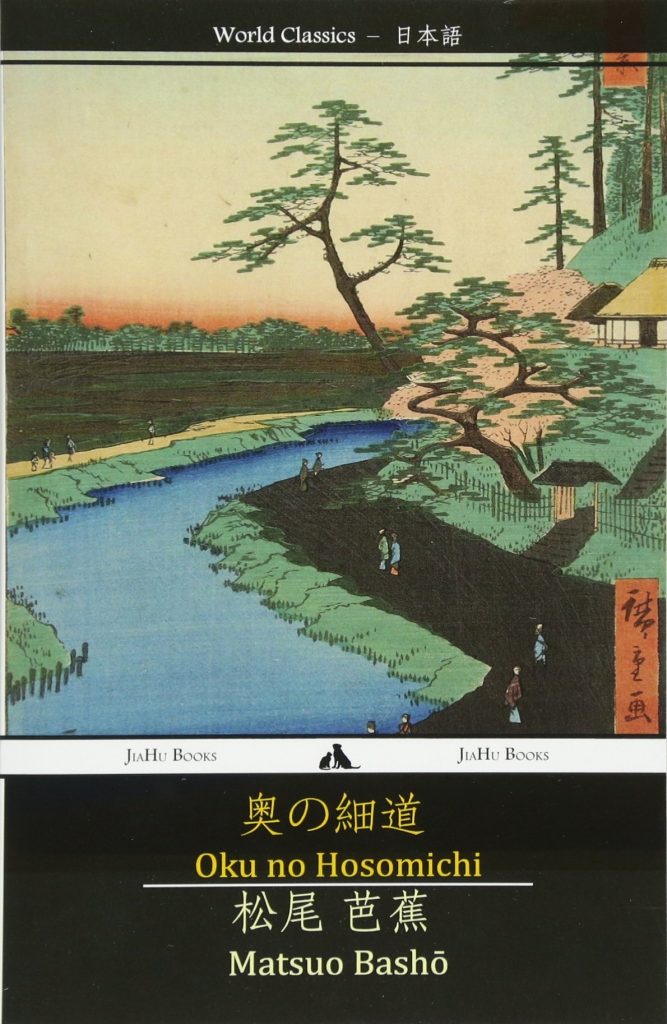Narrow Road to the Interior
By Matsuo Basho. Translated by Sam Hamill.
Shambhala Publications: Boston, 1991.
105 pp. $10.00 (paperback).

As Sam Hamill reminds us in the preface to this lucid and engaging translation, Basho’s haibun—brief prose combined with haiku—is a “return to natural, spiritual, and literary origins.” Hamill’s translation, a gift of careful attention, does not separate poetry from spiritual practice. And, Basho becomes our guide on the way of insight.
Written between 1690 and 1694, Oku-no-hosomichi is based on the journey Basho began in cherry blossom season in 1689, crossing the Shirakawa Barrier into northern Honshu, moving south along the Japan Sea to Ogaki in the autumn. Like the sun and moon which he calls “eternal travelers,” Basho is a wanderer. For him, “each day is a journey, and the journey itself is home.” Having left his small house and students and throngs of admirers, Basho embraces mujo, or impermanence, in a concrete way—he becomes a traveler; no fixed abode, no fixed “self.” Visiting places made famous by poems, Basho enters the spirit of each place more fully by remembering the verses associated with it. Poem and place bring each other into being.
The beauty of Hamill’s translation is that it gives us a clear view of each situation. For those readers willing to go further, Hamill provides brief notes. And, he translates in such a way that the hidden comes closer into view.
In the shade of a huge chestnut at the edge of town, a monk made his hermitage a refuge from the world. Saigyo’s poem about gathering chestnuts deep in the mountains refers to such a place. I wrote on a slip of paper: The Chinese character for chestnut means “west tree,” alluding to the Western paradise of Amida Buddha; the priest Gyoki, all his life, used chestnut for his walking stick and for the posts of his home.
Near the eaves
the chestnut blooms:
almost no one sees.
Readers begin the passage firmly and allusively located: Buddha took refuge under the bo tree and the monk in the refuge of the chestnut. Saigyo, a monk poet, wrote a poem about such a place, we’re told. In the original, and as far as I know in other translations, Saigyo is not named directly. Basho’s more contemplative Japanese readers would have “felt” Saigyo’s presence, for as William LaFleur tells us in The Karma of Words, Saigyo’s name derives from “west” and “going” and is, then, the “unspoken fulcrum” in a passage about moving toward enlightenment, toward dependence on Amida Buddha. The concluding haiku is a kind of shock. Almost no one sees the chestnut blooms and almost no one sees that enlightenment is here and now. By overtly naming Saigyo, Hamill points more clearly to one of the root sources in Basho’s contemplation. This is the translator’s gift, and it helps us to locate meaning not in single symbols—there are no symbols—but in the relationship of the images and phrases, be they spoken aloud or spoken silently by Basho.
Telling us what happened at a shrine on Mount Nikko, whose name means “bright beams of sun,” Basho muses gratefully on the founder’s generosity, and offers a concluding haiku. Here are three translations:
Sam Hamill:
Speechless before
these budding green
spring leaves
in blazing sunlight
Nobuyuki Yuasa:
It was with awe
That I beheld
Fresh leaves, green leaves
Bright in the sun
Cid Corman:
O glorious
green leaves, young leaves
sunlight
Readers may make their own comparisons. I’m struck by the economy of Hamill’s translation when a mimetic economy is called for: “Speechless before.” I’m delighted by the expansive “scattering” of adjectives that deepen meaning with an aural pun in English on Buddha, delighted by the choice of spring (that adjective which is a noun which is a verb) to give us young leaves in the act of springing green. For me these verbal strategies result in a vernacular that is muscular, available, authoritative. It is language that closes the distance between us and Basho. We journey, standing still in contemplation, with that most human of poetic masters and seekers. And with Hamill’s translation in a near pocket-sized book, handsomely illustrated by Stephen Addis, we may be quite concretely moved to enact the journey that is home. Such is the magic of a fine translation.
Thank you for subscribing to Tricycle! As a nonprofit, we depend on readers like you to keep Buddhist teachings and practices widely available.
